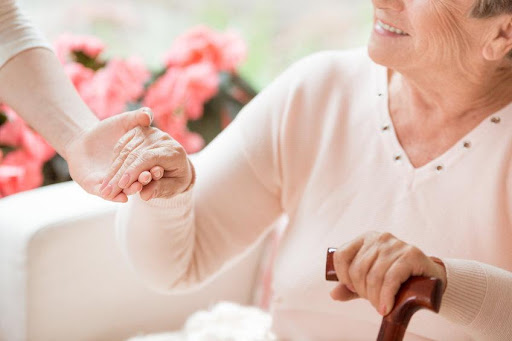
Understanding Osteoporosis
The U.S. Department of Health and Human Services estimates that nearly 10 million people in the United States aged 50 and older have osteoporosis. National Osteoporosis Awareness and Prevention Month is in May. If you're an older adult, you may want to consider setting aside time this month to learn about osteoporosis, its risk factors, prevention tips, and treatment options in case you experience signs and symptoms.
What is Osteoporosis?
Osteoporosis is a bone disease that causes bones to become brittle. The body is constantly breaking down and replacing bone tissue. Osteoporosis occurs when the body can't create new tissue at the same speed as it loses old tissue. Symptoms of osteoporosis include back pain, loss of height, stooped posture, and bones breaking more easily. Osteoporosis is most common after the age of 50. It's also more common in women who go through early menopause. Additional risk factors include a family history of osteoporosis, a woman, and a more petite body frame.
Lifestyle Changes to Reduce Osteoporosis Risk
There are many risk factors associated with osteoporosis that you can't control, such as your age, sex, race, and family history. However, there are lifestyle changes you can make to reduce your chances of developing the condition.
- Make sure you're getting enough calcium and vitamin D. Calcium and vitamin D play essential roles in the strength of your bones. Ensure you're getting enough in the foods you eat or talk to your doctor about supplements.
- Don't smoke. Smoking can increase your risk of osteoporosis, so try to quit smoking to maintain your bone health.
- Reduce your alcohol intake. Drinking is considered excessive when you consume more than two drinks a day. Excessive drinking can also increase your risk of osteoporosis.
- Exercise. Working out can build bone density and reduce the risk of fractures. Consider incorporating activities such as walking, hiking, or resistance band work into your exercise routine.
- Prevent falls in and outside of the home. Falling can lead to bone fractures and breaks, so you must do what you can to prevent falls in and outside the home. Fall prevention includes wearing secure shoes, avoiding icy or wet pathways when walking, clearing clutter, and lighting hallways, so you don't trip when it's dark.
Treating Osteoporosis
Treatment options for osteoporosis vary depending on your risk of breaking bones. If a doctor believes you have a mild chance of breaking a bone, they may suggest lifestyle changes such as improving your diet or reducing your fall risk at home. A doctor may prescribe medication for those at a higher risk of bone breaks or fractures.
A commonly prescribed medication for osteoporosis is bisphosphonates or denosumab to improve bone density. Some people undergo hormone-related therapy, especially women in menopause. Another medication option is bone-building medications such as teriparatide, which are typically only administered when other drugs are not working.
If you're a senior living with osteoporosis in Jasper or the Walker County communities and need assistance around the house, the team at Visiting Angels can help. Call us at 205.388.9353 or send us a message online to learn more about our services.
